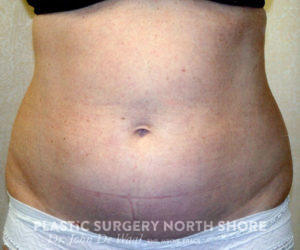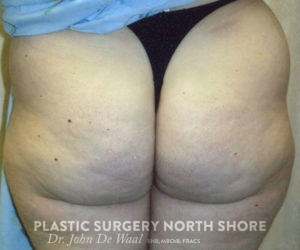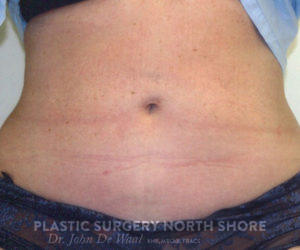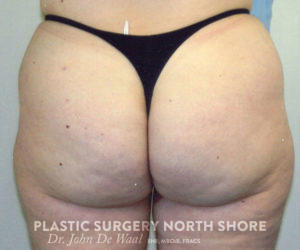Liposuction
As the word implies, the liposuction procedure involves the removal of unwanted fat by means of suction. Liposuction can be used to compliment other procedures or as a procedure in its own right. A variety of names have been linked to this procedure to describe refinements in technique. ‘Liposculpture’, ‘tumescent liposuction’ and ‘superficial liposuction’ are some such terms. Various additional modalities are sometimes used to assist the process – vibration, water jets, laser, ultrasound. The combination of these refinements and additions has given rise to a plethora of names, trademarks and acronyms – VASER, SAFELipo, PAL, UAL etc
At the end of the day however the basic principal and aim is the same – the removal of unwanted fat by suction with the primary aim being to contour the silhouette – not as a form of weight loss.
Fat composition of the body depends on a number of factors – dietary, genetic, hormonal, exercise. All of these factors determine how much and where fat is deposited in the body. The distribution of that fat plays a large part in our resulting body contour.
Weight gain and loss increase fat cell size preferentially over fat cell number. Liposuction reduces fat cell number. While this doesn’t change the fact that you will gain or lose weight according to the previously mentioned factors, it does mean that it can change the distribution of that fat by reducing fat cell numbers in a certain area. It is very good then for altering body contour eg. treating areas such as ‘saddlebags’ on the thighs.
The most common area in which liposuction is used is the thigh and hip area. Abdominal (tummy) liposuction as a lesser alternative to a ‘tummy-tuck’ is also popular. It can however be used anywhere where there is fat deposition under the skin that is contributing to an unwanted contour – ‘love handles’, ‘saddlebags’, knees. It is frequently employed as an extra to improve the resulting contour in breast, abdominal and neck surgery.
It must be remembered though that body contour is also altered by muscle and skin tone as well as fat distribution. Liposuction only addresses one of these factors directly. In some individuals in whom these other areas are the major problem other procedures should also be entertained to achieve a more ideal result.
The procedure is usually performed under a general anaesthetic or local anaesthetic with sedation though smaller areas can be treated under local anaesthetic alone. It usually takes 1-2hours. Very small cuts are made mainly in hidden areas to allow entry of the suction apparatus into the fat layer of the body. A cannula (hollow tube) is placed through the cut and suction applied to suction out fat from the area being treated.
Most people can, and indeed are encouraged to, get up and around as soon as their anaesthetic has worn off. It is advisable that those who have very large volumes of fat removed stay a night in hospital. This is not necessary in most cases, however.
A firmly fitting garment is worn around the area which has been liposuctioned. This aids with the ‘settling in’ of the new shape. It stops fluid and blood from accumulating in the areas where fat has been removed and prevents skin sagging by giving the skin support to help it to ‘shrink back’ in place.
The garment is traditionally worn continuously for two weeks and then ‘most of the time’ for a further month. The actual time varies from person to person depending on the quantity of liposuction, the site from which it is removed and the elasticity of the skin. Exercise and lifting should be limited during this period.
Are generally few in this procedure.
– Bleeding, fluid collection – at the site of liposuction. The liposuction garment is designed to prevent this. If it occurs it needs to be drained and the garment checked for correct fit
– Sensory changes – numbness, tingling or uncommonly local pain can occur, particularly with large liposuction volumes, but tends to be temporary and returns over several weeks to months
– Irregularities – liposuction can cause some irregularities in the soft tissues at the site of suction. Obviously, this is not desirable and every effort is made to gain a smooth contour. Fortunately it is not common. Small irregularities sometimes need to be addressed by a small secondary procedure. Wearing the post-liposuction garment correctly following the procedure helps to avoid this problem
– Infection – can rarely occur and needs to be dealt with promptly or skin loss can occur from the area
– Skin Discolouration – may occur, is usually temporary and resolves with time.
It takes 4-6 months for a final result to be evident and for healing to be complete. If any unevenness, puckering or dimples need to be corrected this is considered at that stage. If any of these occur as a consequence of surgery my normal practice is to correct these free of charge. Hospital and anaesthetic fees however will still apply.





